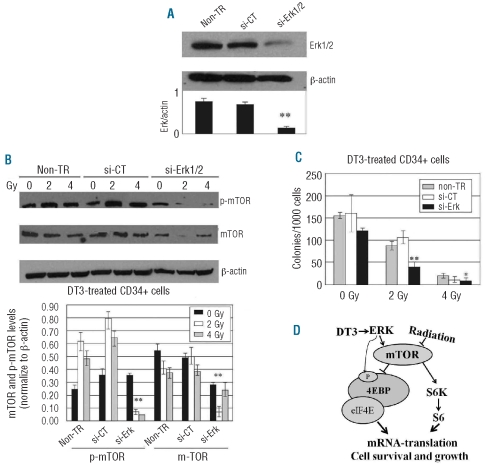Figure 5.
Erk gene knockdown in CD34+ cells after ionizing radiation. (A) SignalSilence Erk1 and Erk2 siRNA from the siGENOME SMARTpool (1.5 μg each) or 1.5 μg of maxGFP siRNA (positive control) were transfected into 3 x 106 human CD34+ cells. Western blots were performed 48 h post-siRNA transfer. (B) Erk1 gene knockdown suppressed m-TOR phosphorylation in DT3-treated CD34+ cells 24 h after 2 or 4 Gy γ-irradiation. Representative immunoblots and statistical data from three experiments are shown. Means ± SD. (C) DT3-induced clonogenicity was significantly reduced by Erk gene knockdown in CD34+ cells after 2 Gy irradiation. Results are from a total of two experiments and each experiment was performed in triplicate. Means ± SD. *P<0.05, **P<0.01. si-CT versus si-Erk. (D) Schematic diagram of the role of DT3 in radioprotection. DT3 reversed irradiation-induced suppression of mTOR activation, resulting in 4EBP1 phosphorylation and S6 and eIF4E activation, which initiates mRNA translation and results in hematopoietic cell survival and growth. The phosphorylation of 4EBP1 can also be controlled directly by the MAPK/Erk pathway.

